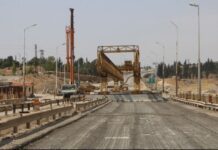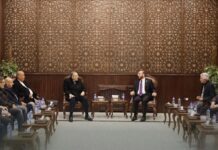
Recent weeks have seen a significant increase in attacks by the Assad regime and Russian forces in northern Syria, raising concerns about the timing and potential implications of Turkey’s overtures towards normalization with Damascus. The intensified bombardments, which include the use of suicide drones and high-explosive munitions, have exacerbated the humanitarian crisis in the region and displaced thousands.
The uptick in violence comes amidst heightened political tensions between Ankara and the Assad regime. Turkey’s renewed interest in normalizing relations with Damascus appears to have emboldened Assad and his Russian allies. Local observers have reported a marked increase in reconnaissance and military activity over Idlib, with drones and warplanes frequently patrolling the skies.
The Syrian Civil Defense, known as the White Helmets, has documented a disturbing trend of new and dangerous tactics employed by the regime and Russian forces. These tactics include the use of Russian warplanes and highly destructive munitions. On July 11, three drones targeted civilian vehicles in Jabal al-Zawiya, and Russian warplanes hit multiple civilian targets, including an out-of-service school and a water station.
Reports from local media and humanitarian organizations indicate that the increased use of suicide drones has created further instability and threatens to trigger a new wave of displacement. The White Helmets have recorded 120 suicide drone attacks from regime-controlled areas in the first three months of 2024, resulting in numerous casualties and significant property damage.
Turkish President Erdogan’s recent statements about potential normalization with Assad have stirred significant concern among the local population in northern Syria. His comments, promoting reconciliation with Assad, have been followed by intensified Russian and regime attacks, which many interpret as a signal of Assad’s strengthened position. This rapprochement is seen by some as undermining the revolution and emboldening Assad and his allies to pursue more aggressive military strategies.
In response to the increased aggression, revolutionary military factions in northern Syria have mobilized to defend their territories. The Fath al-Mubeen Operations Room (FMOR) has actively targeted regime positions with mortar and heavy machine gun fire. Hayat Tahrir al-Sham (HTS) has also engaged regime forces in northern Latakia, demonstrating continued resistance against Assad and Russian aggression.
Despite these efforts, the humanitarian toll is severe. According to the White Helmets, 38 civilians, including 13 children and six women, have been killed in the first half of this year due to Russian and regime bombings. The use of suicide drones has led to additional civilian casualties and destruction, highlighting the desperate need for international intervention and support.
The international community has condemned the recent attacks. On July 11, the British government denounced the regime’s use of suicide drones against civilians, calling for accountability for these crimes against humanity. The Syrian Salvation Government (SSG) in Idlib has urged friendly countries and the international community to hold the regime accountable and prevent further atrocities.
The situation in northern Syria remains precarious, with the civilian population bearing the brunt of the conflict. As Turkey navigates its complex relationship with Damascus, the implications for civilians and revolutionary forces in northern Syria could be profound.








